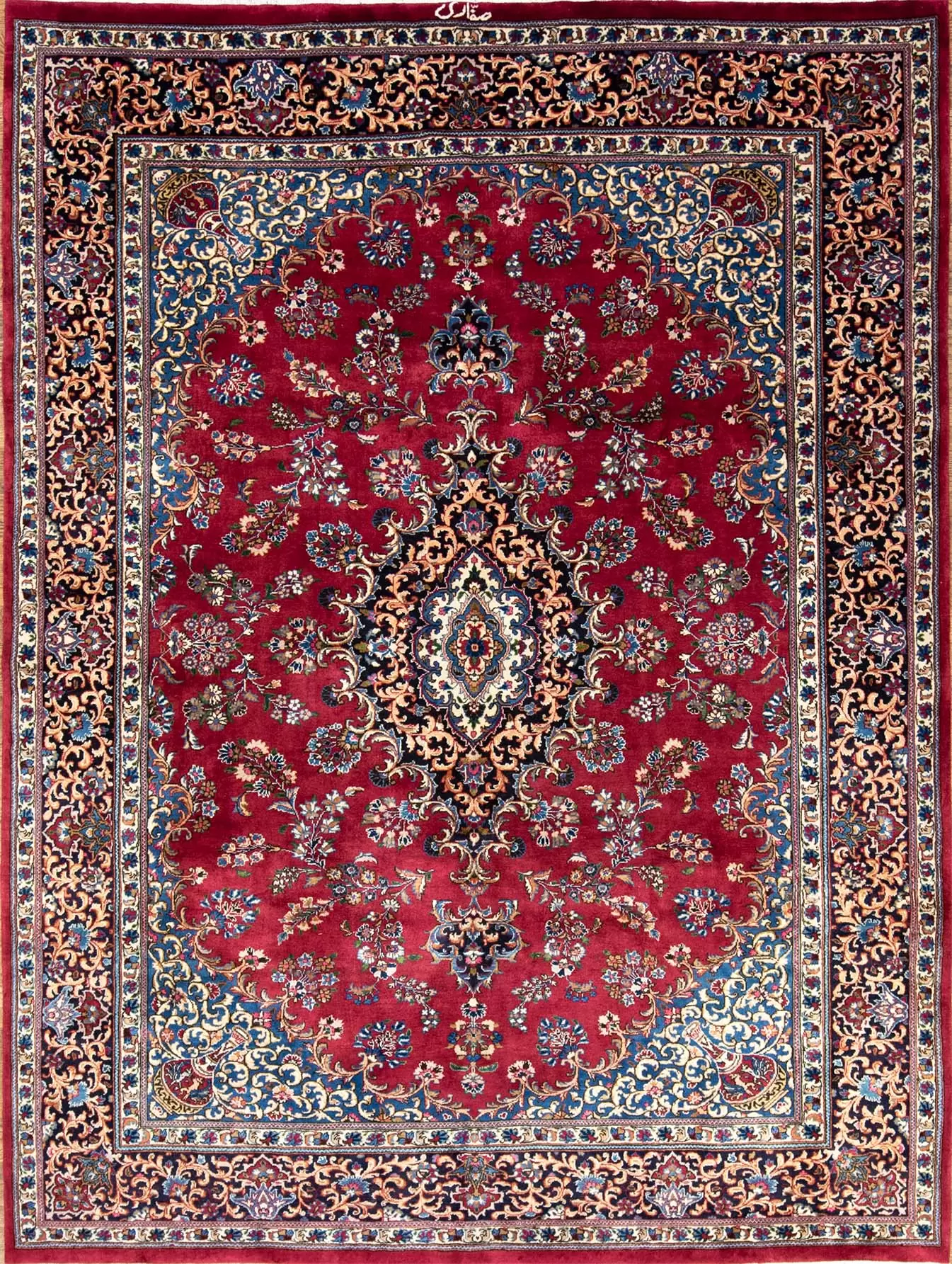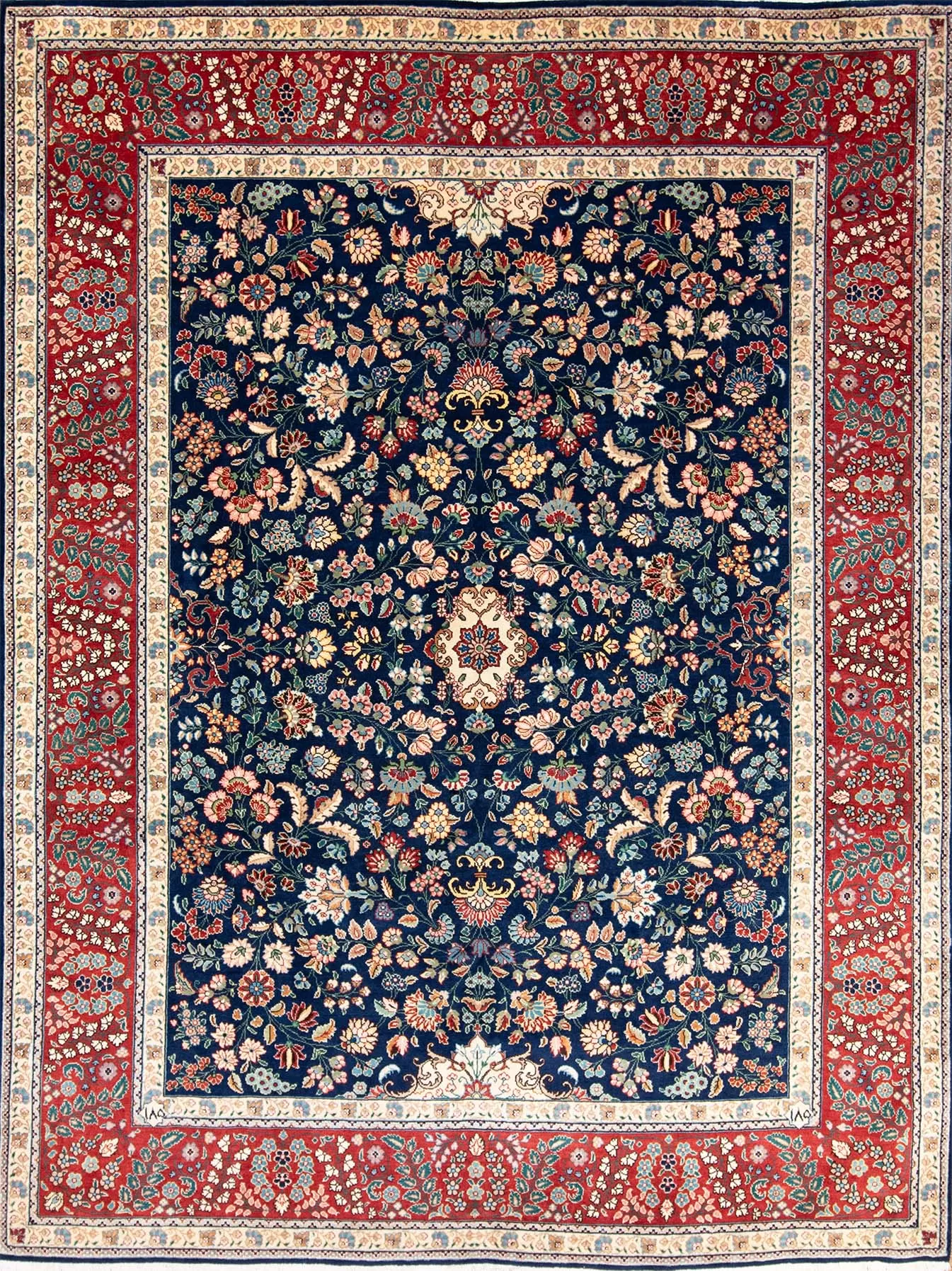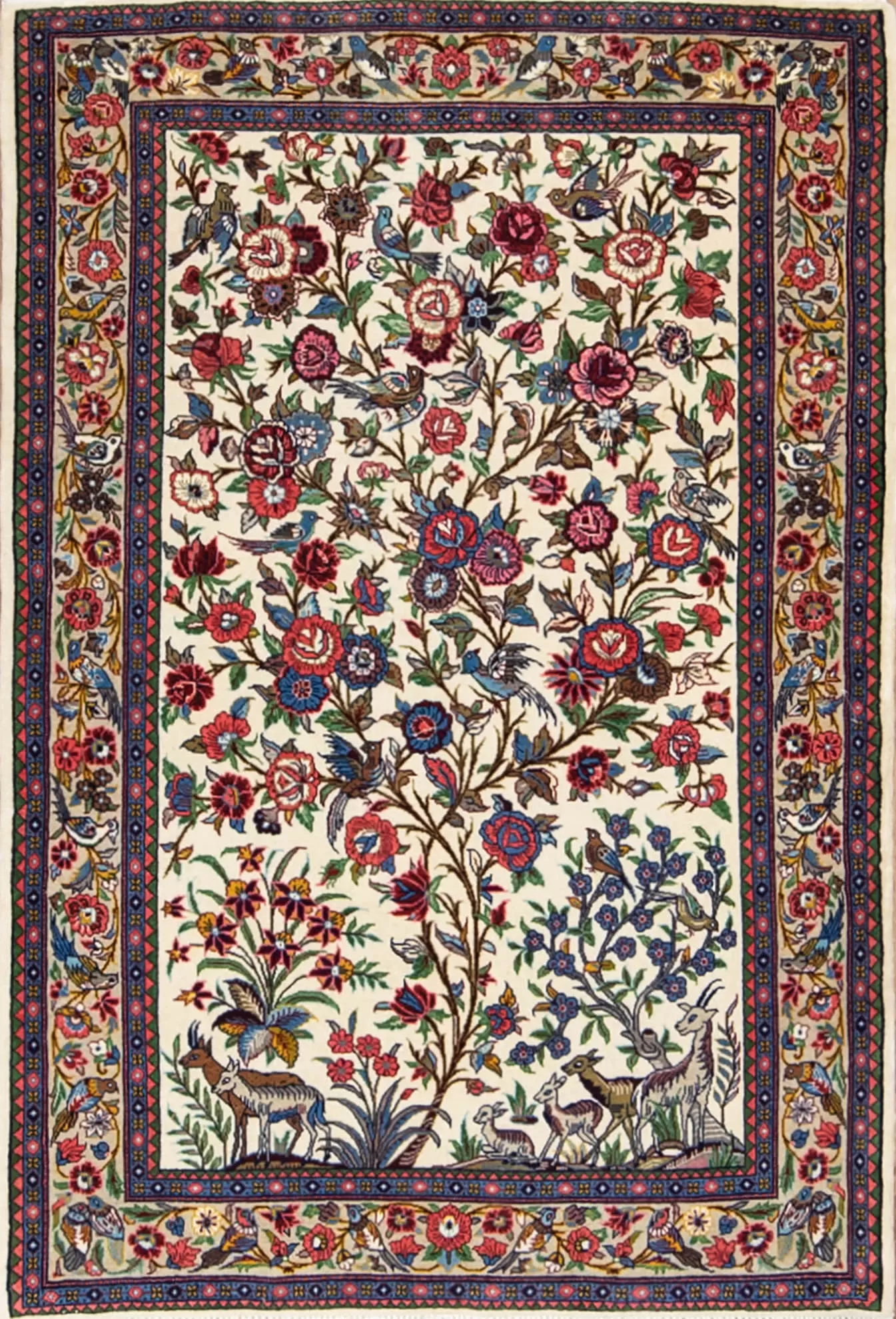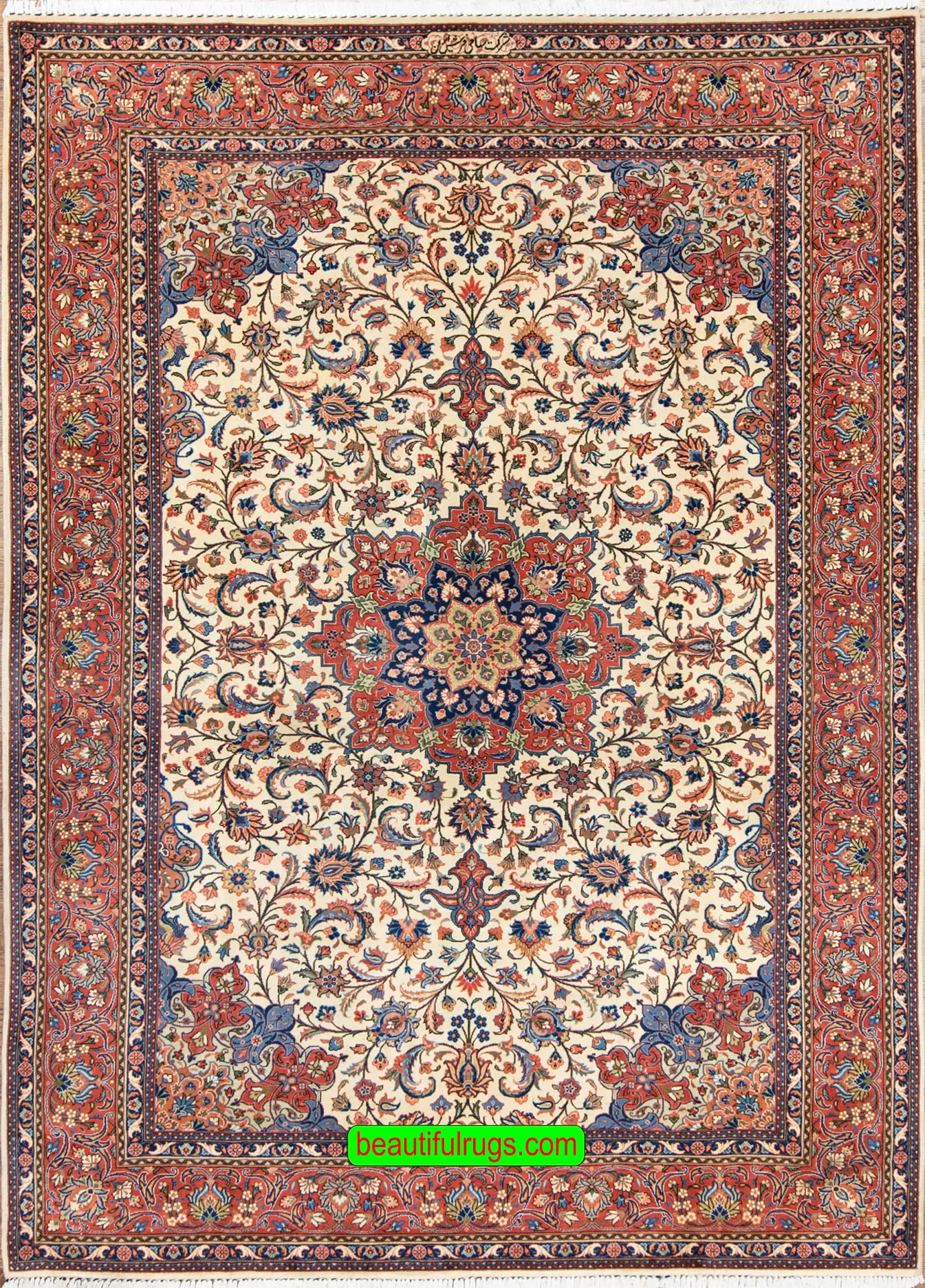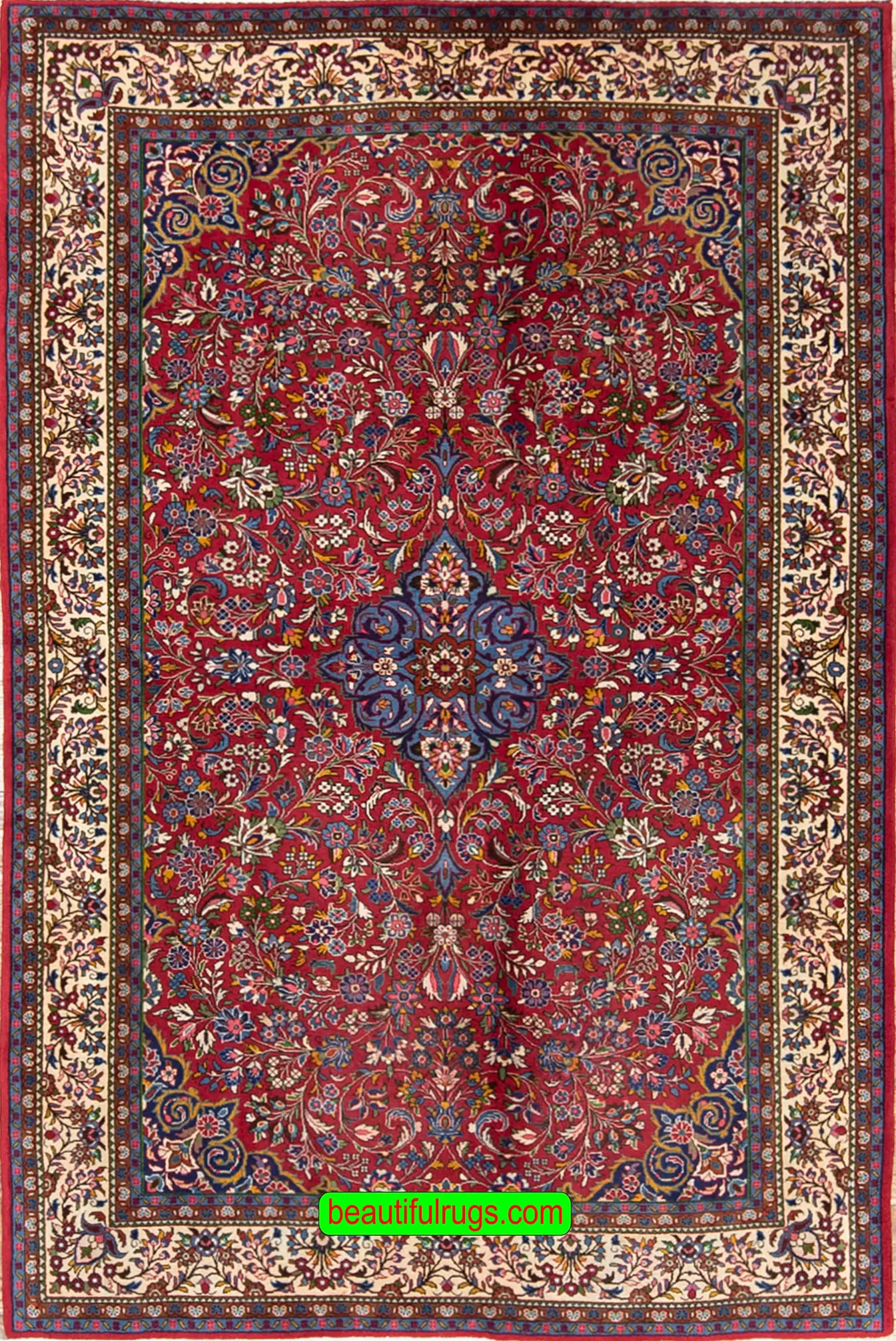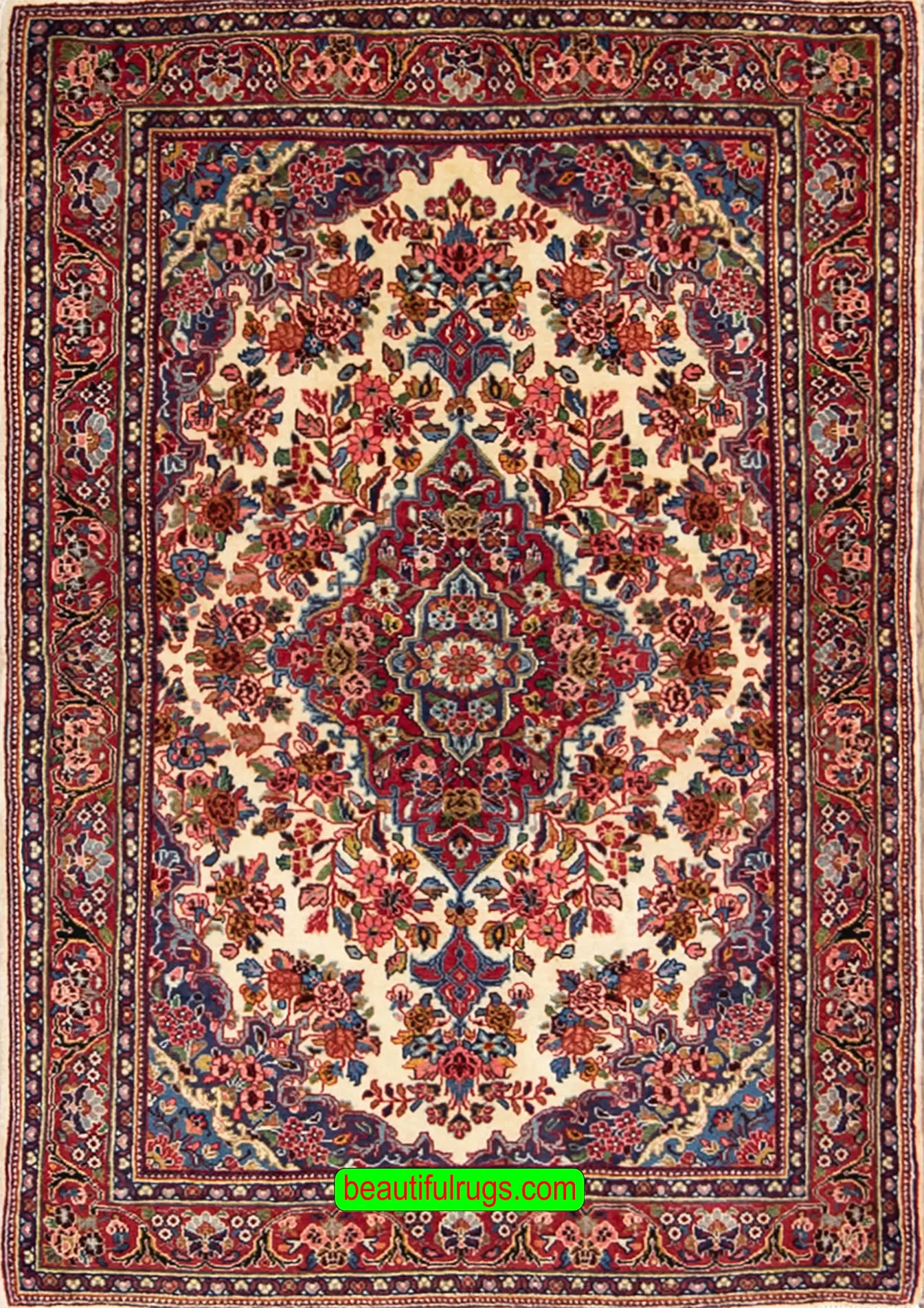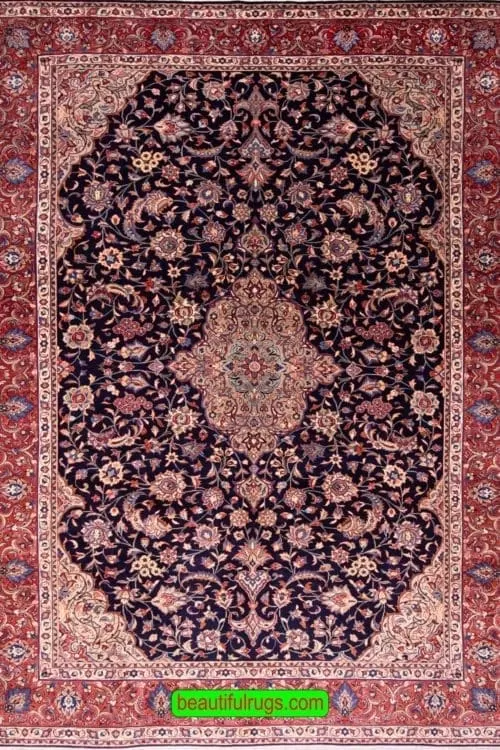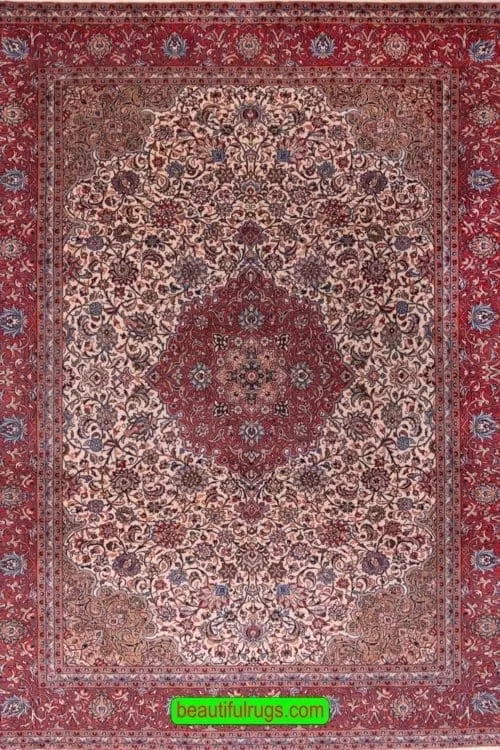Sarouk Rugs, Persian Sarouk Rugs and Carpets
Sarouk, a village located in West Central Persia, was a flourishing weaving region from the late 19th century through the early to mid-20th century. Lying a few miles north of Arak (Sultanabad), what is now the Markazi province of Iran, Sarouk was known for its high-quality, artistically unique carpets featuring intricate center medallion motifs. The history of Sarouk rugs is quite interesting.

Unlike a majority of traditional Persian rugs, the popularity of Sarouk rugs is largely owed to the American market. In Persia, the rug-making industry was in a state of steady decline in the 18th century, which continued for most parts of the 19th century. Fortunately, there were several rug exhibitions held in London and Vienna, including the first World Oriental Carpet Exhibition, which renewed Western interest in these rug designs and prompted several artisans and carpet merchants to set up rug weaving centers and workshops in Arak and its surrounding areas. It wasn’t long before large-scale companies began trickling in and setting up shops in areas like Tabriz and Sultanabad to meet the rapidly rising demand in the Western market. The British-Italian Nearco Castelli Brothers, Eastern Rug Trading Company of New York, and the Atiyeh Brothers of Oregon were some of the earliest to establish their offices. Now, carpets with designs that appealed to the taste and demands of Western customers began to be produced, along with various new types of Persian rugs.
Sarouk Style Rugs, Persian Sarouk Farahan
One of the most famous carpet designers in Sarouk was named Farahan. In the 19th century, to compete with Kashan in the rug market, he began creating rugs with curvilinear designs and floral motifs and patterns, which came to be known as Farahan Sarouk. They had naturally dyed medallions on blue or ivory fields, in addition to pictures of birds and trees.
American Sarouk
Sarouk rugs that were produced during the 1920s and 1930s featured naturally dyed rose-field carpets with blue borders and detached floral sprays. Americans were, however, not too impressed with the color of the field. To remedy that issue, the rugs were renovated, chemically stripping them of their original color and hand-dying them in a deep burgundy to please the taste of the clients and customers. Other colors like green and blue were also used. In the 1950s, thousands of these rugs were renovated and repainted, which came to be known as American Sarouks. Due to the re-dying, the colors of these rugs may have become uneven over time.
Buy Persian Sarouk Rugs at Beautiful Rugs
Beautiful Rugs offers a collection of the finest Sarouk rugs with beautiful floral, animal, and an array of other Oriental motifs and patterns. Browse through our collection to discover handwoven vintage rugs that are designed to add color and warmth to any space. Whether you are looking for a quick way to dress up your living space or something to give your floors a unique look and feel, our Sarouk rugs are undoubtedly the perfect choice for you. Their unmatched grandeur, durability, and ability to complement even contemporary decors have made Sarouk rugs a favorite among our loyal customers. Made to endure generations of heavy use, these rugs have the potential to become heirloom pieces that can be passed down in the family. Moreover, their tremendous demand and limited availability make them one of the most priceless carpet styles you can own.
Do you have any questions about Sarouk rugs or how to buy them? Feel free to contact us for more information.
Showing 1–20 of 34 results
STYLES
-
Sale!

Persian Navy Blue Area Rug, Thick 10x13 Persian Sarouk Area Rug
Original Price:
Sale Price: $8,900.00Save: $2,700.00 (23.3%)
Read more- Sale!

Iranian Rugs, Floral Beige Rug from Iran
Original Price:
Sale Price: $6,995.00Save: $1,865.00 (21%)
Read more
Persian Style Area Rugs, Red Persian Sarouk Area Rug for Living Room
Original Price: $5,995.00 Read more- Sale!

Blue Rug, 8x11 Persian Sarouk Floral Blue Rug
Original Price:
Sale Price: $6,995.00Save: $1,905.00 (21.4%)
Read more- Sale!

White Rug, 5x7 Floral Persian Sarouk Wool Rug
Original Price:
Sale Price: $1,399.00Save: $598.00 (29.9%)
Read more- Sale!

Persian Rug, Handmade Persian Sarouk Tree of Life Rug
Original Price:
Sale Price: $1,495.00Save: $972.00 (39.4%)
Read more- Sale!

3x5 Rug, Colorful Persian Sarouk Rug Chicago, Tree of Life Wool Rug
Original Price:
Sale Price: $2,080.00Save: $895.00 (30.1%)
Read more- Sale!

4x6 Beige Area Rug, Persian Sarouk Area Rug Included in Rug Sale Chicago
Original Price:
Sale Price: $1,599.00Save: $868.00 (35.2%)
Read more- Sale!

Red Persian Rug, Floral Persian Sarouk 3x5 Wool Rug
Original Price:
Sale Price: $998.00Save: $529.00 (34.6%)
Read more- Sale!

Area Rugs, Beige Persian Sarouk Traditional Wool Area Rug
Original Price:
Sale Price: $4,995.00Save: $985.00 (16.5%)
Read more- Sale!

Red Rug, 4x6 Rug, Persian Sarouk Floral Wool Rug
Original Price:
Sale Price: $3,528.00Save: $2,352.00 (40%)
Read more- Sale!

Wool Rug, Persian Sarouk Wool 7x10 Rug for Living Room
Original Price:
Sale Price: $3,690.00Save: $410.00 (10%)
Read more- Sale!

Prayer Rug, Hand knotted Persian Sarouk Wool Rug, Arch Rug
Original Price:
Sale Price: $1,958.00Save: $840.00 (30%)
Read more- Sale!

Best Area Rugs, Persian Sarouk Wool Rug with Birds and Animals
Original Price:
Sale Price: $1,299.00Save: $451.00 (25.8%)
Read more- Sale!

Area Rug for Sale, Old Persian Sarouk Wool Rug
Original Price:
Sale Price: $1,099.00Save: $491.00 (30.9%)
Read more- Sale!

Handmade Persian Rug, Old Persian Sarouk Wool Rug
Original Price:
Sale Price: $4,720.00Save: $1,180.00 (20%)
Read more
Dining Room Rug, 7x10 Persian Sarouk Rug for Dining Room
Read more
Area Rug, Red Persian Sarouk Wool Area Rug
Read more- Sale!

Persian Hand Knotted Sarouk Rug, Iranian Sarouk Carpet
Original Price:
Sale Price: $4,995.00Save: $1,605.00 (24.3%)
Read more- Sale!

Persian Traditional Rug, Old Persian Sarouk Rug
Original Price:
Sale Price: $4,992.00Save: $1,248.00 (20%)
Read more - Sale!


